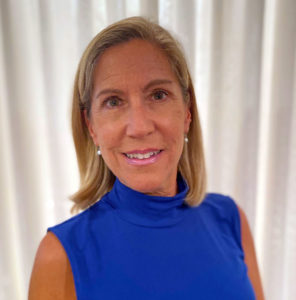 Ed Talk is a biweekly opinion column. The views expressed are solely the author’s.
Ed Talk is a biweekly opinion column. The views expressed are solely the author’s.
While many believe that Arlington Public Schools (APS) currently is engaged in an elementary school boundary process, it is not. Instead, APS proposes moving entire school populations from one school to another. It then will consider boundary changes in the fall of 2020, offering no details on what those might look like.
Making adjustments to school assignments is necessary to create an attendance zone to fill seats at the new elementary school at the Reed building opening in 2021. In addition, APS intends to redraw the attendance zone for Arlington Science Focus School to address significant crowding in that part of the County.
APS has a detailed policy for boundary changes, which includes consideration of the following factors: efficiency, proximity, stability, alignment, promoting demographic diversity, and contiguity. However, there is no policy governing the current “school move” process and APS has been explicit that it is not considering demographics.
Research is clear that students — all students — do better in diverse learning environments.
Yet many of our schools are not diverse. The socio-economic differences are stark: the average eligibility for free/reduced price meals for neighborhood elementary schools in south Arlington is more than three times that of neighborhood schools in north Arlington – 52.58% compared with 15.58%.
We also know that there are significant gaps in academic achievement between poorer and wealthier schools. For example, the Standards of Learning math pass rate last year at Carlin Springs Elementary was 62% (free/reduced price lunch eligibility — 81.15%) and for Tuckahoe Elementary it was 98% (free/reduced price lunch eligibility — 1.51%).
The School Board’s boundary policy appropriately considers promoting demographic diversity, recognizing that this has an impact on student achievement. Students in diverse schools also have the benefit of learning about and from others with different backgrounds, languages, and life experiences.
Among the APS core values is equity, which is defined this way: “Eliminate opportunity gaps and achieve excellence by providing access to schools, resources, and learning opportunities according to each student’s unique needs.”
APS should consider lack of diversity in schools as an opportunity gap.
As APS staff, community members, and the School Board engage in the current process, I suggest that the four equity questions I referenced in my November 1 column be asked:
- Who benefits?
- Who is burdened?
- Who is missing?
- How do you know?
Since APS is not considering demographics in its school move process, these questions cannot be fully answered. We do know that the burden of one of the proposals may fall disproportionately on low-income students, since it would move nearly all students at Campbell, Carlin Springs, and Key elementary schools. And given what appears to be the lack of any community support for the proposals, who benefits?
The Board should not move thousands of elementary school students in a process that is separate from a boundary process and that does not consider demographic diversity. To do so misses the chance to reduce opportunity gaps by increasing diversity at our elementary schools.
Instead, school moves and boundary changes should be considered together, with data about the free/reduced price lunch population and racial/ethnic composition of each elementary school that would result. And consideration should be given to other tools that have been used in the past to address crowding, diversity, and achievement, such as option and team schools.
Achieving more diversity across our elementary schools, most of which are neighborhood schools, is challenging. But we cannot make any progress if promoting demographic diversity is not even a factor in the process of assigning students to different schools.
Abby Raphael served on the Arlington School Board from 2008-2015, including two terms as Chair. She also led the Washington Area Boards of Education for two years. Currently she co-chairs the Project Peace Prevention Committee and Destination 2027 Steering Committee, is a member of the Board of the Arlington YMCA, and works with the Community Progress Network and Second Chance.



